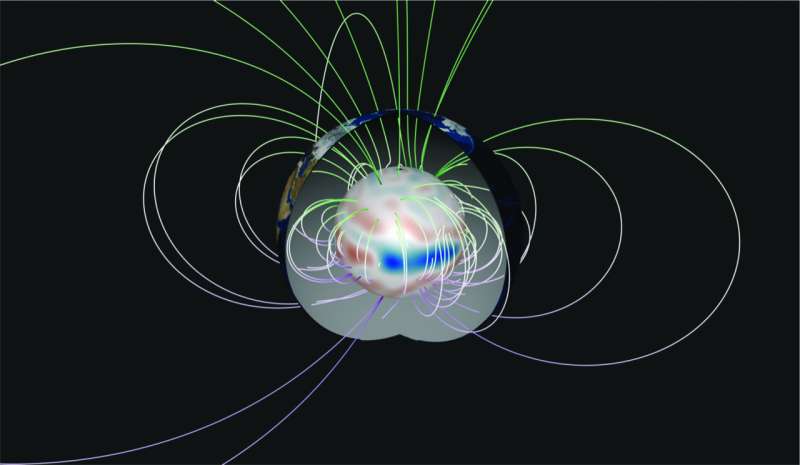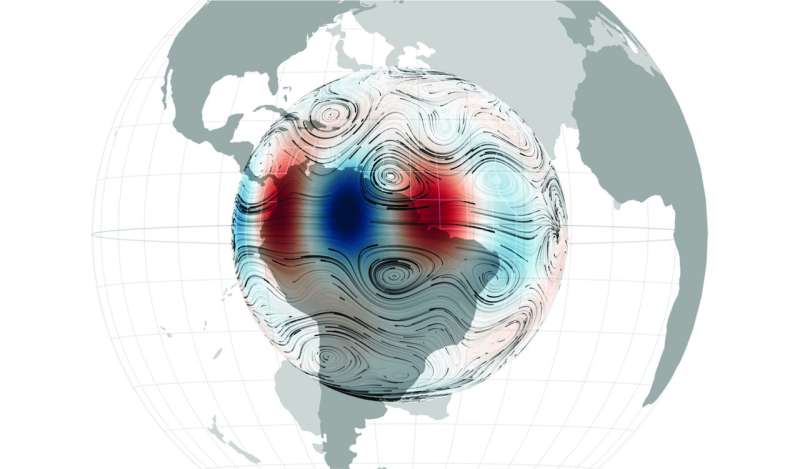March 22, 2022 report
Nonaxisymmetric wavelike patterns identified in the equatorial region of the Earth's core

A team of researchers from the Royal Observatory of Belgium, Université Savoie Mont Blanc and Institut de Physique du Globe de Paris has identified nonaxisymmetric wavelike patterns in the equatorial region of the Earth's core. In their paper published in Proceedings of the National Academy of Sciences the group describes their study of geomagnetic data obtained from satellites and ground-based observatories over a twenty-year period and describes fluctuations they found beneath the equatorial part of the planet.
Prior research has shown that differences in temperature between the Earth's inner core and the outer layer of liquid metal covering it generate a powerful magnetic field. The magnetic field is strong enough to shield the planet from radiation, making life possible. Prior research has also found that the motion of the liquid and the charged particles that it generates is turbulent and random. This explains why Earth's magnetic field varies over time. In this new effort, the researchers sought to learn more about changes to the planet's magnetic field by looking for variations over many years.
The researchers acknowledge that the physics involved in changes to the interannual geomagnetic field are still not well understood, though it is known that such variations can extend from several years to hundreds of millions of years. To learn more about it, they collected and analyzed geomagnetic data from several satellites and ground-based observatories from the years 1999 to 2021. They found a nonaxisymmetric pattern in the magnetic field around the equatorial part of the planet's core that repeated every seven years with amplitudes reaching as high as 3 km/y. It also moved slowly westward at a rate of approximately 1,500 kilometers each year.

In addition to revealing more about the planet's field, the researchers suggest their findings also contradict theories that there is a thin layer of rock below the mantle and above the outer core. They plan to continue their research by attempting to image the geomagnetic field deep inside the core—work that could potentially lead to a means for predicting changes to the field.
More information: Nicolas Gillet et al, Satellite magnetic data reveal interannual waves in Earth's core, Proceedings of the National Academy of Sciences (2022). DOI: 10.1073/pnas.2115258119
Journal information: Proceedings of the National Academy of Sciences
© 2022 Science X Network



















